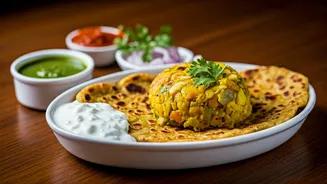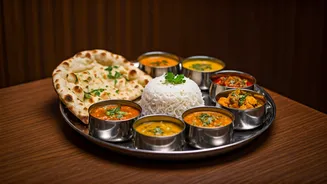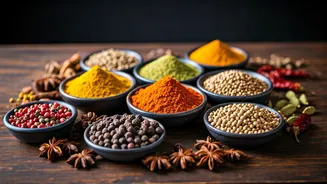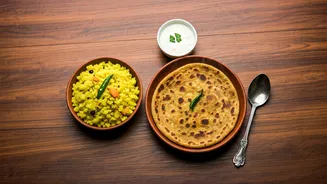Bihari Cuisine Origins
The culinary traditions of Bihar have been profoundly influenced by the region’s geography, history, and agricultural practices. Situated in the fertile
Gangetic plains, Bihar has always had access to a wide array of ingredients. This abundance, coupled with influences from neighboring states and historical events, has shaped a diverse cuisine. Over centuries, various dynasties and cultural exchanges left their marks, integrating unique spices, cooking methods, and dietary preferences into the local food practices. The use of seasonal produce is central to Bihari cuisine, ensuring that dishes are fresh and vibrant. Traditional cooking methods, passed down through generations, remain integral, preserving authenticity and flavor. Understanding the origins of Bihari food helps appreciate the complex flavors and cultural heritage that make each dish special and reflect the land's rich history.
Essential Bihari Ingredients
Several key ingredients are fundamental to Bihari cooking, reflecting the region’s agricultural wealth. Rice is a staple, frequently served with various dishes. Wheat is another vital component, used in various breads and preparations. Lentils (dal) are a cornerstone, with options like masoor, toor, and chana dal being incredibly popular; these are cooked in diverse styles, creating flavorful curries. Vegetables, especially those grown locally, are essential. Potatoes, eggplants, cauliflower, and spinach appear regularly in the cooking process. Spices play a crucial role, with turmeric, coriander, cumin, and mustard seeds being extensively utilized. These spices not only enhance the taste but also provide the dishes with their signature aroma and color. Fresh herbs like coriander and ginger-garlic paste contribute to the freshness and complexity of flavors. Combining these ingredients creates a balanced and satisfying meal, illustrating the region's culinary practices.
Signature Cooking Techniques
The cooking techniques in Bihar are a fascinating blend of traditional methods passed down through generations, combined with the practicalities of everyday life. One of the most common methods is slow cooking, often over a low flame or using earthen pots, which allows flavors to meld and develop richly. Stir-frying is common, especially for vegetables and meat, where ingredients are quickly cooked over high heat to retain their texture and taste. Frying is extensively used for snacks and side dishes, like pakoras and various breads. Roasting, particularly in open fires or tandoors, is another technique, giving food a smoky flavor. The use of mustard oil in cooking is quite typical, adding a unique flavor dimension. Dum pukht, or slow cooking in a sealed pot, is favored for certain dishes, locking in moisture and intensifying flavors. These cooking practices are crucial to the authentic flavors found in Bihari dishes, ensuring each meal brings a culinary experience.
Popular Bihari Dishes
Bihari cuisine boasts an array of delicious dishes. Litti Chokha is undoubtedly the most iconic, consisting of baked wheat balls (litti) served with mashed vegetables (chokha). Dal Pitha, a steamed dumpling made from rice flour and filled with lentil paste, is a popular breakfast choice. Sattu Paratha, a stuffed flatbread with sattu (roasted gram flour), is a filling and nutritious meal. The regional variations of curries are numerous, with dishes like fish curry and mutton curry being favorite non-vegetarian choices. The vegetarian options include dishes made with seasonal vegetables, often cooked in thick, flavorful gravies. For sweets, the Malpua, a deep-fried pancake soaked in sugar syrup, is a delightful treat, and the Khaja, a crispy, layered pastry, is another classic. These dishes highlight the diversity and rich flavors of Bihari cuisine, showcasing how different ingredients and cooking techniques are combined.
The Cultural Significance
Food plays a central role in Bihari culture, acting as a vital connection to traditions and community. Meals are often a social occasion, where families and friends gather to share and enjoy food. Festivals and special occasions, such as Chhath Puja or Diwali, have dedicated dishes, prepared and enjoyed as part of the celebration. The recipes are often passed down through generations, ensuring the preservation of family culinary practices. The ingredients and methods are deeply rooted in local traditions and environmental elements, reflecting the region's agrarian history. Food also reflects the values of hospitality and togetherness that characterize Bihari society. Sharing food is a gesture of welcome and respect, strengthening social bonds within the community. The cultural significance of food enhances its importance, making each dish a part of a wider cultural narrative.










